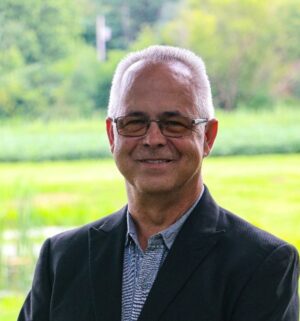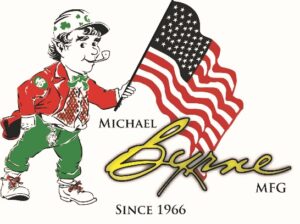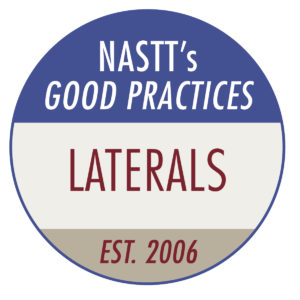Industry News, trenchless people
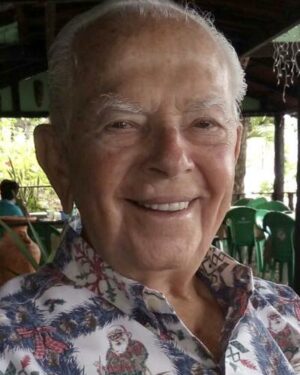 Puerto Plata, Dominican Republic — W. Michael “Mike” Byrne, age 99, peacefully passed away at home on Sunday morning, October 16, 2022. Mike embodied the spirit of The Greatest Generation in his drive and his passion for helping those in need, be it his family; his fellow Mansfielders; or the underserved communities in the country he held dear to his heart, the Dominican Republic.
Puerto Plata, Dominican Republic — W. Michael “Mike” Byrne, age 99, peacefully passed away at home on Sunday morning, October 16, 2022. Mike embodied the spirit of The Greatest Generation in his drive and his passion for helping those in need, be it his family; his fellow Mansfielders; or the underserved communities in the country he held dear to his heart, the Dominican Republic.
Mike was the son of Ruth (Cannon) and Lawrence Morris Byrne, and was born July 1, 1923, in Minot, North Dakota. At age 3, his family moved to Port Huron, Michigan, where he grew up—but in 1931, at the height of The Great Depression, Mike’s father left his mother and five siblings. To help make money for his mother, Mike started working at the age of 8. His jobs were many and varied, from selling newspapers and flowers on the street corners, to selling jewelry and whiskey (Mike was a very proud Irishman). He also worked at Hayden’s Upholstery. When Mr. Hayden died, he left his 1927 Ford Model T to Mike; at age 12, Mike owned his first car. To his last days, Mike always said, “We were poor, but because of my mother, we never knew we were poor.”
In 1943 he was drafted into the U.S. Army Air Corps; he became a 2nd Lt. Bombardier/Navigator. After the war, Mike worked for Evans Products Co. in Detroit. In 1949, the Small Appliance Division of the Westinghouse Electric Corporation recruited Mike and he moved to Mansfield, Ohio. He worked at Westinghouse for the next 15 years; it was there he met “the most beautiful lady in town,” his future wife, Lois Hershey.
Mike rose through the ranks at Westinghouse, eventually becoming the National Marketing Manager and overseeing the company’s sales and marketing efforts. For a three-year period, he was transferred to New York City’s Manhattan office before returning to the Mansfield office.
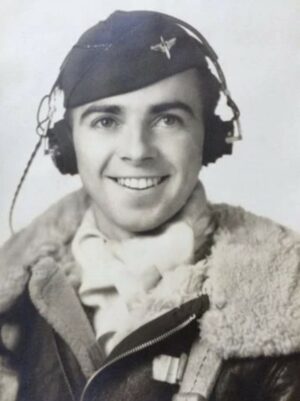 In 1966 Mike started his own business, Michael Byrne Manufacturing, a manufacturer of horizontal earth boring machines. This business eventually expanded into tunneling, coal augering and environmental clean-up machines and equipment. For his efforts in manufacturing, Mike was inducted this past September into the North Central Ohio Industrial Museum’s “Champions of Industry.”
In 1966 Mike started his own business, Michael Byrne Manufacturing, a manufacturer of horizontal earth boring machines. This business eventually expanded into tunneling, coal augering and environmental clean-up machines and equipment. For his efforts in manufacturing, Mike was inducted this past September into the North Central Ohio Industrial Museum’s “Champions of Industry.”
In Mansfield, Mike was active in many businesses and organizations and was always willing to lend a hand. From the early ’60s to the mid ’80s, he was the agent for Greyhound Bus Lines and Western Union. He was the first president of the St. Peter’s High School Booster Club and a member of the St. Peter’s Board of Education; he was on the founding board of the St. Peter’s Summer Festival. He was also on the founding board of The Store (now The New Store), which provides clothing to children in need.
When he moved to the Dominican Republic in his later years, Mike was still very active and passionate about making a difference in people’s lives. He and Lois helped fund and subsidize the construction and operation of a primary school in the city of Puerto Plata. Together they also founded and funded a nationwide program and worked with CitiHope International to import and distribute medicine and medical supplies for the poor. Mike was most proud of this program and its evolution; it is now heavily funded and supported by Rica, the largest juice and dairy products company in the Dominican Republic.
Mike’s hobbies were not many—he always said he was too busy working—but he was an avid fisherman and enjoyed woodworking.
Mike is survived by his children Terrence Byrne, Jeremiah Byrne, Laura (James) Weist, Leslie (David) Eichinger, Lynn Stone, Lisa (Mike) Bumb, Brian (Carol) Byrne, (Shawn) Byrne Felton; 19 grandchildren; and 9 great-grandchildren who lovingly knew him as “Great Mike.” Mike was preceded in death by his wife of 64 years, Lois; and his son Chris. A memorial service with family and friends will take place at a later time, with whiskey and memories flowing freely.
We are all so thankful for Mike’s extraordinary life and for all the lives he touched. Condolences can be sent to condolences.wmichaelbyrne@outlook.com; memorial contributions may be made to The New Store, P.O. Box 2525, Mansfield, Ohio 44906.
Funeral home : Funeral arrangements are being handled in the Dominican Republic
Mike will be inducted into the Manufacturer’s Hall of Fame this year. View a video honoring his life and industry contributions here.
Blog
The North American Society for Trenchless Technology is pleased to announce the winners of the 2022 NASTT Outstanding Trenchless Paper Awards for New Installation and Rehabilitation. These awards recognize excellence by commending authors of the best NASTT No-Dig Show papers each year. The winning papers were presented at the NASTT 2022 No-Dig Show.
2022 Outstanding Paper: New Installation
Comparison of Observed and Predicted Settlements: City of Dubuque Bee Branch Parallel 101” Microtunnels Under Canadian Pacific Railyard

David Bennett, Ph.D., PE, Bennett Trenchless Engineers, Folsom, CA, United States
Sandie Dudley, PE, Bennett Trenchless Engineers, Folsom, CA, United States
Dave Bennett’s engineering practice, Bennett Trenchless Engineers, focuses on trenchless technology. With expertise in geotechnical evaluations, microtunneling, tunneling, HDD, and pipe bursting and experience in conducting feasibility studies, preliminary designs, design/constructability reviews, providing permit assistance and preparing plans and specifications, prequalification packages, and instrumentation and monitoring plans, Bennett knew from the get-go that this project would be worth talking about. “I felt strongly from the beginning of the project negotiations with the Railroad regarding permitting concerns that the extensive settlement monitoring program they required would provide valuable data and insights for design professionals,” Bennett explained.
Sandy Dudley, who was mentored early in her career by NASTT member Jennifer Glynn, brought her experience in conveyance infrastructure, geotechnical and environmental engineering and design and construction to the project. “Jenn was the first of many great trenchless mentors I’ve had over the years. My advice to folks starting out is that the trenchless industry is full of experienced people who are eager to share their knowledge and engage newcomers – take them up on their willingness to share what they know every chance you get.” Presenting at the No-Dig Show is one way Dudley is sharing what she knows and connecting with other trenchless professionals. You can also connect with Dudley in Honolulu in December when she runs her eleventh marathon!
Both Dudley and Bennett are honored to receive the award noting that there are so many excellent papers at the NASTT No-Dig Show. “Quality has reached an apex,” Bennett says. They would also like to acknowledge others who contributed to the success of the project, including Eric Vieth and Mike Jansen with Strand and Deron Meurhing and Steve Sampson-Brown with the City of Dubuque.
Comparison of Observed and Predicted Settlements: City of Dubuque Bee Branch Parallel 101” Microtunnels under Canadian Pacific Railyard is featured in the Fall 2022 issue of Trenchless North America.
2022 Outstanding Paper: Rehabilitation
CIPP After 50 Years: A Framework to Estimate Realistic Design Life Expectations

Chris Macey, P. Eng., AECOM, Winnipeg, MB, Canada
John Gumbel Ph.D., CEng, MICE, JG Pipeline Consultancy Ltd, Winchester, United Kingdom
Lynn E. Osborn, P.E., LEO Consulting, LLC, Dardenne Prairie, MO, United States
With more than 125 years of industry experience between them, its no surprise that the combination of trenchless legends Chris Macey, John Gumbel and Lynn E. Osborn produced an award-winning paper and one of the highest attended sessions at the NASTT 2022 No-Dig Show. “I grew up in a place where trenchless technologies were practiced long before we had the word ‘trenchless,’” shares Macey. “It’s all I have ever known.” Osborne worked with sliplining and pipe jacking road crossings in the 1970s and became aware of CIPP in the early 1980s. “I visited a CIPP project and knew I had to become a part of pipeline trenchless technology,” Osborne recalls. Gumbel was getting into the industry around the same time working as a specialist in buried pipeline design. “I was consulted by Insituform in the UK to review the basis of their design of CIPP sewer linings,” Gumbel said. “It struck a chord and led to my recruitment into the industry that I have never since left.”
All those years led to some realizations they agreed had to be addressed. Osborne explained, “We knew that the industry needed to know more about the longevity of CIPP and other pipeline rehabilitation materials. There are many misconceptions in our industry. At some point engineers need to be engineers.” The paper discusses solving problems in a logical manner, using common sense and the building blocks laid out by previous generations of engineers. Macey reminds professionals that you can’t just look up answers about the design life of a rehabilitation produce or pipe in a book. “It’s a process and it involves doing some true engineering. We can make things fail in a very short time by not doing our jobs or we can make them last for a very long, long time periods by simply doing our jobs.”
When asked who else they’d each like to acknowledge, it was certainly a mutual admiration society – each one mentioning the impact they had on one another, their years of friendship and pursuit of life-long learning together. In addition, Osborne gives special recognition to Eric Wood, the inventor of CIPP and a member of the NASTT Hall of Fame (2013). “I had the privilege of working with Eric for ten years before his life was tragically ended by a plane crash. Out of his work grew a great industry.”
CIPP After 50 Years: A Framework to Estimate Realistic Design Life Expectations was featured in the Summer 2022 issue of Trenchless North America.
The winning papers (and all the NASTT No-Dig Show papers) are available in the NASTT product store .
Authors of both papers will give encore presentations at the NASTT 2023 No-Dig Show in Portland, Oregon. Visit the conference website.
Industry News, trenchless people
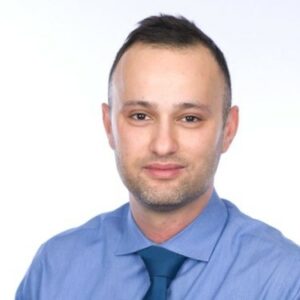 Who Will the New Generation of Engineers Follow?
Who Will the New Generation of Engineers Follow?
The need to inspire through meaning.
By: Keivan Rafie, P.Eng., M.Eng., PMP, ENV SP, CDT
Hatch Ltd.
Meaning in What We Do
A young boy was visiting a rural village with his father, a chief engineer who was looking at the ongoing site works for a water conveyance project that would provide nearby towns and villages with clean water. Water that wasn’t brown. Water that was safe. As the boy was being impressed by the scale of the engineering and construction activities, he noticed a village member ask his father if he and other staff on the job could close the site for one day. The villager offered for some locals to accompany them on a tour of the nearby towns so they can show their appreciation of their hard work on behalf of the community in their own way. His father replied, “Thank you. I’m sure the other staff and I would enjoy that a lot; but, nothing makes us happier than seeing your community provided with clean water even a day sooner. You’ve waited long enough.” That boy was inspired and determined to become an engineer from that moment. He saw the meaning achieved through engineering.
More than Salaries and Titles
New engineering graduates spend years preparing to achieve what they are passionate about and making a difference in society. They also understand they will spend around a third of each working day interacting with coworkers and managers. For some, this is more than they have with family and friends.
The new generation of engineers understands that choosing a firm or team to work with is as important as choosing a close friend or partner. They seek a team that shares their core personal ideals and social values and understands what they stand for. They seek leaders who prioritize career development and personal growth not just with paycheques – but with values and decisions.
In the past two decades, I have seen many astounded employers who have lost engineering staff to other companies — some worryingly, to other industries. Of course, some firms with high-profile projects offering appealing positions and exciting salaries can attract and keep new hires for the short term. But these may not be enough to keep those hires committed to stay when companies go through slow periods or when they cannot offer expected salary increases.
If the inducements we give employees to stay put are the ones other well-managed companies can give, i.e., a paycheque and title, then there is no reason for younger staff not to explore other options when available. It is important to note that there is nothing wrong with providing incentives for retention. The danger is that they work so well in the short term that many employers and employees lose sight of the bigger picture.
When it comes to being deeply devoted or passionate about a company’s long-term vision and future, something more than financial incentives is needed to differentiate the company from other employers. That something is meaning and purpose.
New generation engineers generally need to have a purpose. Otherwise, they may feel lost. When we ask people why they work, among the first responses are typically to ‘pay the rent and bills’ or ‘put food on the table’. Everyone knows though that in addition to financial security, work needs to provide other benefits, such as opportunities to learn new skills, a chance to engage with others as social beings, the pride in accomplishment, and most importantly, being identified with a meaningful purpose.
Good Answers. Wrong questions.
Most companies recognize that their financial and technical success depends on encouraging employees to perform well in terms of their accountability, flexibility and responsiveness. These important factors shape the challenges that companies can undertake and how well they perform. Such demands generate a lot of interest in finding out what type of salary, title and benefit stimulates the new workforce to perform better in particular areas.
There is also a vast amount of literature on what companies can do or what type of management style attracts the best talent in a competitive market. Yet much of the workforce still does not consider what it does as its dream job, and if asked how it feels about its role in the company, very few will respond passionately or state that “there is no other place I would rather be”. Unfortunately, we may have gathered very good answers to the wrong questions.
Leaders for a New Generation
The topic of leadership generates shelves and shelves of books. Most leadership books are about management efficiency, office politics, how to impress your boss, or organizational psychology at best, disguised under different leadership keywords. But there is one and only one standard by which individuals or organizations can be considered as ‘leaders’: to have followers. That is because we follow those who have inspired us. We follow not because we need to, but because we want to. We follow to be better and to add meaning to what we do day in and day out. We follow those who would unconditionally have our backs when needed. We are happy to help them with anything only because we know they will do the same for us when the time comes.
The new generation of engineers understands the need for competence to tackle unprecedented global challenges. They also know they have options as to which industry to work in and which firm to work for. Of course, a good salary and benefits are basic requirements, but with so many companies around that can provide a fair compensation package, a reasonable paycheque and title may not be sufficiently enticing. Therefore, we need to start asking better questions to understand what young engineers value. For example, see if you’ve asked and known the answers to these:
- What gets them out of bed every morning and makes them feel they have an exciting, meaningful job?
- What makes them feel they have a future in the company and industry they work for?
- Knowing their skills and capabilities, where do you see them ten years from now?
- Are you mentoring them for what they need to do several years from now by exposing them to those communications and experiences any time you could?
- What about their work and the projects that make them and their families proud and give them a feeling of being part of something bigger than themselves?
- How are is their work making a difference to society and do they go to bed knowing they have improved the lives of their community, even by a little?
To find the right answers to questions like these, we need to embrace the meaning of what we do and believe in the vision that inspired us.
Start with Why
If a firm’s president and other senior managers decided to come up with an impactful message to motivate staff and show how exceptional the company was in the eyes of clients and the public, they would have missed the point of defining a company’s vision. This type of corporate vision (if we can call it that) is focused on the ‘”what” and the “how”, not the “why”.
In reality, what we are and how we do things should only serve as proof of our vision, not the vision itself. If our vision is authentic, it will inspire people to do everything through the guiding principles required to reach that goal. A true vision is usually ‘born’ (not made) by the founders of any firm and then evolves to something more through inspiration by the next generation of employees who join the cause. A true vision has the ‘why’.
When a company’s vision can be ‘believed’ and is capable of giving meaning to employees’ lives, many other things happen naturally. We see that everyone working around us becomes a leader to inspire others who would follow and, at the same time, results in happier work life, higher motivation, and a sense of purpose and teamwork to achieve what the whole team believes in.
Of course, any company that operates in such an inspiring environment (as a byproduct) will do better in servicing its clients, winning new projects, and hiring exceptional staff who remain loyal to the company for reasons other than salary and title. These inspired employees will then prove their loyalty to the shared values they believe in — the ‘why’ — by ‘what’ they do and ‘how’ they do it. These motivated individuals will then become a source of inspiration for other newly hired employees. From there, every decision, every product, and every communication becomes tangible evidence of what they are inspired by.
Many firms in the engineering and consulting world can check the same ‘what’ box (doing the same type of work and having the same experience), many of them also check all the necessary ‘how’ boxes (the best practices and expected ethical and professional standards). Firms with an inspiring vision have the ‘why’ that causes young engineers to choose to follow them.
When the company’s cause inspires young engineers, the decision to join and remain with the group is now more about who they are and less about the company they work for.
To lead this generation, we need to be clear and authentic about the meaning and purpose of what we do; then, everything we do, we do in a way that progresses that ultimate goal. There is no surprise that in such an environment, our actions and words will always be consistent, and the quality of our work becomes a consequence of the direction in which we are heading, not the goal itself.
Keivan Rafie is the Deputy Regional Director – Tunnels at Hatch Ltd. In Vancouver, British Columbia. Keivan has worked on tunnel, mining and ground improvement projects since 2001. He graduated with a Bachelor’s of Science in Mining Engineering and completed a Master’s of Science degree in both Tunneling and Project Management. Keivan is an ardent supporter of engaging, encouraging and developing young engineering professionals. As a member of NASTT, Keivan has served on the NASTT No-Dig Show Technical Program Committee and on the Outstanding Paper Judges Panel.
 Puerto Plata, Dominican Republic — W. Michael “Mike” Byrne, age 99, peacefully passed away at home on Sunday morning, October 16, 2022. Mike embodied the spirit of The Greatest Generation in his drive and his passion for helping those in need, be it his family; his fellow Mansfielders; or the underserved communities in the country he held dear to his heart, the Dominican Republic.
Puerto Plata, Dominican Republic — W. Michael “Mike” Byrne, age 99, peacefully passed away at home on Sunday morning, October 16, 2022. Mike embodied the spirit of The Greatest Generation in his drive and his passion for helping those in need, be it his family; his fellow Mansfielders; or the underserved communities in the country he held dear to his heart, the Dominican Republic. In 1966 Mike started his own business, Michael Byrne Manufacturing, a manufacturer of horizontal earth boring machines. This business eventually expanded into tunneling, coal augering and environmental clean-up machines and equipment. For his efforts in manufacturing, Mike was inducted this past September into the North Central Ohio Industrial Museum’s “Champions of Industry.”
In 1966 Mike started his own business, Michael Byrne Manufacturing, a manufacturer of horizontal earth boring machines. This business eventually expanded into tunneling, coal augering and environmental clean-up machines and equipment. For his efforts in manufacturing, Mike was inducted this past September into the North Central Ohio Industrial Museum’s “Champions of Industry.”
